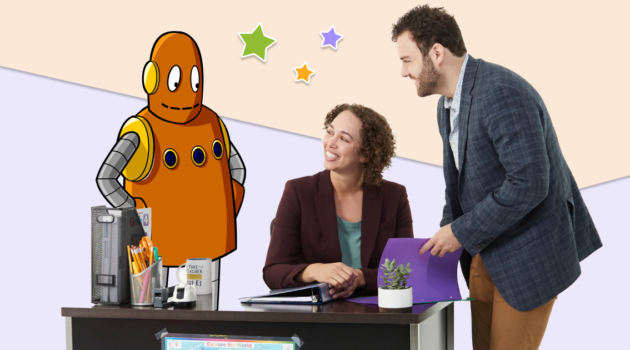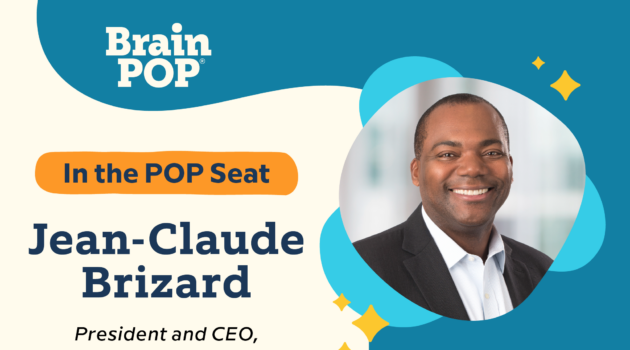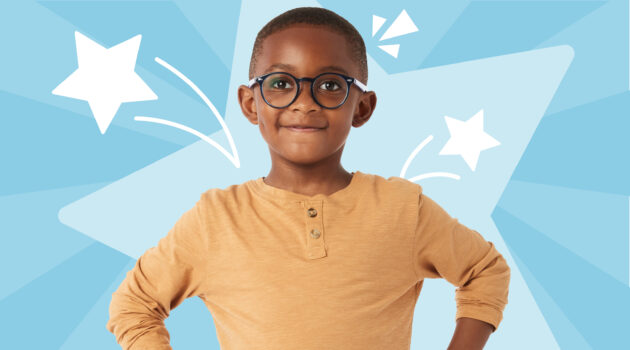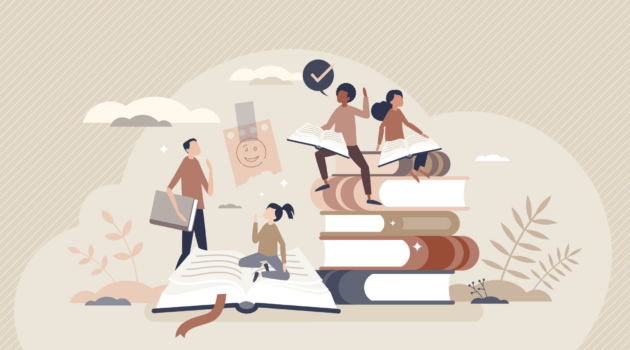In the POP Seat™
In the POP Seat: ISTE and ASCD’s Richard Culatta Talks “Bringing Our Best” for Kids
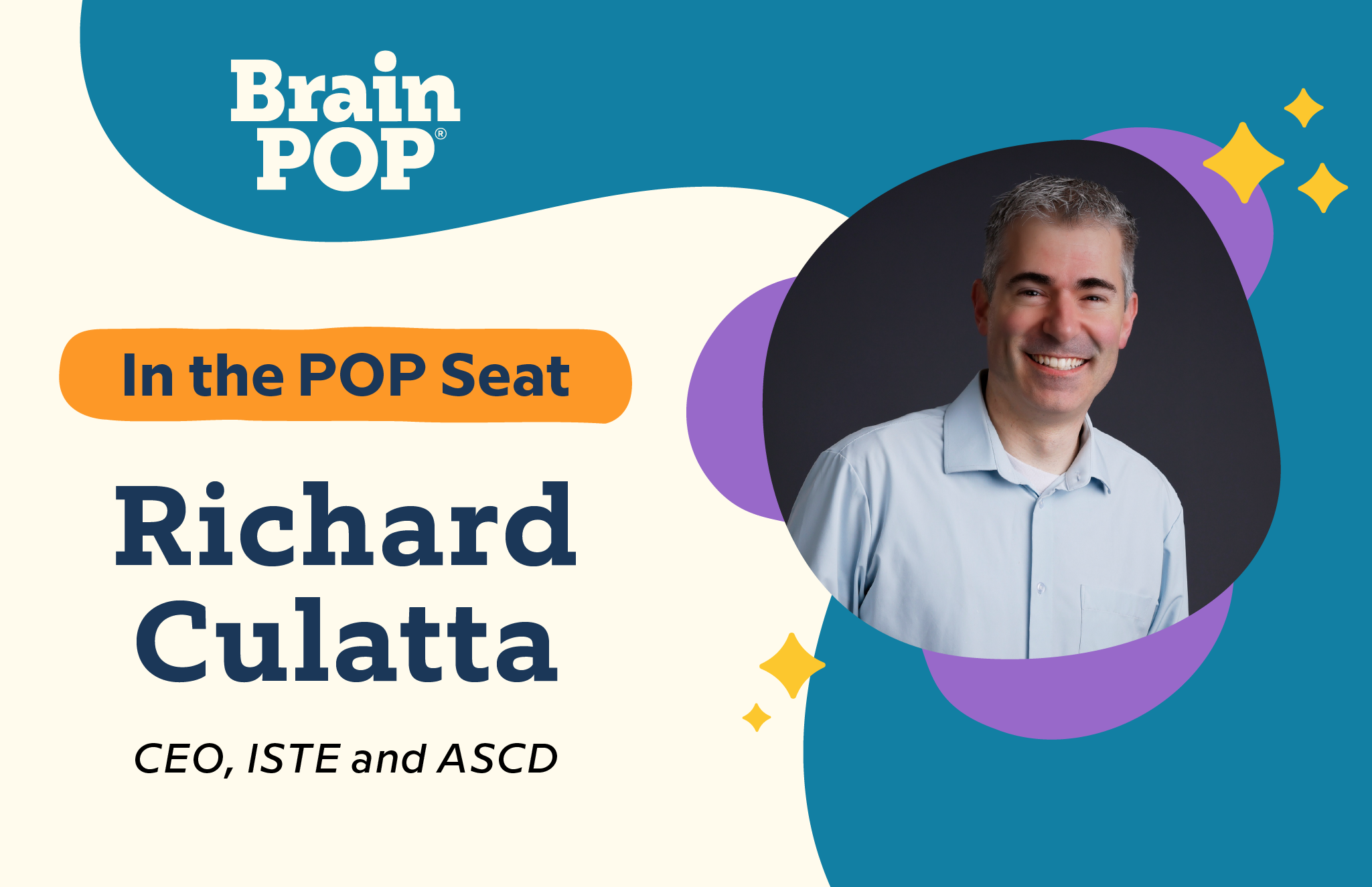
Photo courtesy of Richard Culatta
If you run in education innovation circles, Richard Culatta is a familiar voice on everything from digital citizenship to the future of learning. The former high school teacher and present day CEO of ISTE and ASCD built his career shaping policy and innovation at the highest levels, serving as executive director of the Office of Educational Technology for the U.S. Department of Education under President Obama, and chief innovation officer for the state of Rhode Island. On matters of education, he is a design thinker who leads with empathy and follows through with strategy. His team is crafting new pathways for educators and product creators to align more closely around research-based learning design to meet real classroom needs. Through this work, Culatta remains ever mindful that kids are our most important stakeholders—and a joyful learning experience is the end goal.
Name: Richard Culatta
Role & Organization: CEO, ISTE and ASCD
Looking back on your early career experience as an educator, how does that period inform your perspective in your current work—which impacts so many educators and edtech companies?
My first job was a high school Spanish teacher. I did that for a very short time because the university I had just graduated from asked if I would come teach and help them redesign their technology program for new teachers. I did, and I loved it, and would happily be doing that today, had it not been for a series of random chances that brought me to Washington, D.C.
I had the chance to work in the U.S. Senate on education policy, and from there was appointed by President Obama to lead the Office of Educational Technology. Even though I spent far more time in policy roles, I’m incredibly grateful for the time I spent in the classroom because it really did shape the work that I’ve done since. I think it is really critical that people who are making key policy and regulatory decisions about education have experience in the classroom.
If we don’t have a community where educators and tech developers can work together on solving tough problems, we’re not bringing our best to the table for kids.
After working at the national level, I had a chance to return to my home state of Rhode Island to help the governor on some special projects, including making Rhode Island the first state to teach computer science in every school. Then I had the honor to be invited to join the amazing team at ISTE. We’re incredibly grateful to also have expanded the family in January when ISTE joined forces with ASCD.
When you were in the classroom, did you have an inkling that you wanted to fix or change something?
Yes. One of the most surprising things for me was how lonely it felt when I actually got into the classroom. Of course, there were young people that I was teaching, but peers and colleagues were in other rooms, and I had almost no interaction with them. I never felt like I was part of a team. That has shaped my focus on making sure we’re providing online communities so that teachers can connect with each other. I think it’s really critical that we leverage tech tools to help make sure teachers feel like they’re part of the great community of educators all around them. I think anybody that has been a teacher knows this, but it is perhaps surprising for people who have not been in the classroom: So much time is spent on things that are not teaching. From doing reports, to logistics of managing the classroom, to dealing with activities in the school and addressing parent issues. One of the reasons why we need to be very thoughtful about how we’re using technology, particularly artificial intelligence, is because if we can offload and pull some of the burden from our teachers’ backs, we can tap into their superpower, which is being amazing teachers.
Making learning joyful is a shared priority for our organizations. What is your vision for bringing joy to the classroom?
A lot of schools talk about keeping students at the center, but often don’t say at the center of what. We want students to be at the center of an amazing experience that they love, and that is not always the case in schools—in part because we’re feeling enormous pressure to make up for some of the lost learning that happened over the last couple years of COVID.
We know that on all kinds of measures, students have fallen a bit behind. But unfortunately, I think there’s also a bit of a self-fulfilling prophecy, where if we double down on making school really serious, and more rigorous, with more practice, it actually becomes less and less of the thing that the students want to be at the center of. So, I think it is critical that we bring an infusion of joy into the learning experience.
I think every school district should have a chief experience officer, and their job should be to make sure we are creating an amazing experience that feels more like Disney than the DMV.
Going into the Department of Motor Vehicles is not a joyful experience, but going to a Disney Park is. If you think about it, there are actually some similar elements: You wait in long lines in both places, but even the lines at Disney have been designed to be fun and joyful, and the signs are friendly. We have forgotten sometimes that the design of the experience of school matters. I think every school district should have a chief experience officer, and their job should be to make sure we are creating an amazing experience that feels more like Disney than the DMV.
They might look at things like, how long are kids waiting in lines? How respectfully are kids being addressed? How much time do kids have with the adults in the building? How is the layout and the design of the physical space helping to support their learning? What is the quality of the instructional materials that they’re being given? How much voice do students have in the sorts of things they learn? Those are all experience issues, and when we talk about making learning joyful, it means that we want students to love school. It’s already happening in many schools, but it requires a very intentional goal to create a school that kids want to be at the center of.
To your earlier point about quality instructional materials, over the last year your team reframed the ISTE Seal to give districts a more robust indicator of product quality and usability. (BrainPOP is proud to be among the first cohort of new Seal recipients!) Why was it important for you to evolve the Seal?
We have felt for a long time that it is really critical that there are neutral third parties reviewing the types of products that we are putting in front of kids. So, we created the ISTE Seal, but the original research base was only designed to support products that had a specific curriculum. Many tools that schools are using don’t necessarily have a curriculum built into them. It could be a tool that is trying to create collaboration between students, or help them manage their progress towards a goal. So, thanks to support from the Bill and Melinda Gates Foundation, we took a year, and we built out the research base to be able to review all types of tools or products that are getting in front of kids. We’re looking at more than just the quality of the content, like: Is it teacher ready (something that a teacher can easily use)? Is it appropriate for kids? Is it accessible? Is it based on solid principles of learning science? That research base is now baked into the new Seal. BrainPOP is a Seal holder, which is a sign of the fact that you have done a lot of work to make it a really great product.

Download BrainPOP’s ISTE Seal Review Findings Report to learn more.
For the product community, I think it’s important to note that no matter how good your product is, our goal is to say, “You can always make it better.” We may review the product and say you got the Seal, but here are four or five things that you could still do to keep making it better. We want to help everybody that we’re working with continually improve the quality of their products. The feedback has been great so far from the tech industry and from the school community, who have been clamoring for a long time to have us include more types of products, and now we can do that.
What role do you see ISTE continuing to play as a leading voice in the discourse on what educators should expect from edtech?
Often ISTE has been referred to as the “edtech Switzerland,” meaning that we’re a neutral party that brings together the educators and the tech developers. As an industry, we’ve had this firewall: If you create a product, you’re over here; if you’re in a school, you’re over here. The only time that they ever mix is through a very rigorous contractual process. I believe that it’s important to have good contractual processes, but in order to create the right learning experiences that we’ve been talking about, both of those groups need to be able to talk to each other. Our goals at the end of the day are the same.
So, we have to have the tech industry working with educators asking, “Hey, how would we solve this?” And educators can be going the other way saying, “Here are the real problems that we need help solving. This is what we need you to be working on.” That’s what’s so critical.
I believe the role of ISTE and ASCD moving forward is to make sure that we are helping facilitate those conversations, that we’re talking across boundaries. If we don’t have a community where educators and tech developers can work together on solving tough problems, we’re not bringing our best to the table for kids. Our hope moving forward is that we’ll take an all hands on deck attitude. We all need to be working together on identifying the right problems, on building the right solutions, on testing the right solutions with the right people, and then making sure that they’re actually making a difference.
Are you developing any new initiatives to address that opportunity?
Yes! Once we updated the ISTE Seal, the next step was to create a community where we can bring people together around these issues. We are building a Solutions Network—companies are coming together to learn from educators and share among each other how they are making their products better. It can be very hard for companies to get the direct, unvarnished needs and truth from educators. One of the questions we have to ask is, “What do you wish you could tell vendors during a procurement process, but there isn’t any way to do that, because of the way the system is set up? Here’s your chance to do it.”
We do it the other way, too: We ask companies, “What do you wish you could tell schools when they are creating their RFPs, which you can’t because there’s no way to do it in the process? ‘If you could include these elements, you would get a better result from your RFP.’” A lot of what you’ll see us doing through this network, which we are piloting this year, is building those bridges.
Shifting gears a bit to a topic that I know is very important to you: digital citizenship. You’ve written and spoken about the “do’s” versus the “don’ts.” Where have you seen folks getting the “do’s” right?
There are many places where schools are doing the “do’s.” One example that I love is a school that I had a chance to connect with in La Cañada Unified School District in California. They made a very clear decision that they weren’t teaching anti-cyberbullying. It’s interesting because we don’t have anti-illiteracy; we teach kids to love to read. So instead of anti-cyberbullying, why don’t we teach kids to be good cyber friends? That’s what they decided to do. They flipped to the positive. Now instead of teaching the “don’ts,” they are teaching important, real skills that can be modeled and practiced.
That is what digital citizenship is. It is not a list of all the things you shouldn’t do. It is the practice of using these tools to make the world around you better.
There are a number of schools across the country, including in Los Angeles Unified School District, that have positively reframed acceptable use agreements, which lay out the conditions for using technology in schools. Most of these documents talk about all the ways that kids will be in violation of a policy if they use tech in the wrong way, but that was not the original intent. The intent of the regulation was to create a healthy environment for kids to set the right conditions. We have a guide that we put out with CoSN that helps schools rewrite those acceptable use agreements to really state the positive ways to do it—that makes a big difference.
There’s a big movement in schools to reset those policies, and it’s not just here in the US. I was talking to a kindergarten teacher from Scotland who does an activity with her kids to think about using technology to help solve a community problem. What that does, right off the bat, is teach kids that these are tools to make an impact in your community, to make the world around you a better place. That is what digital citizenship is. It is not a list of all the things you shouldn’t do. It is the practice of using these tools to make the world around you better.
We’re also working with school districts to create a curriculum to help them teach digital citizenship in a very positive way, laying out a whole set of activities for how to do that. It will be available in 2024.
I appreciate how you are empowering students. What is one piece of advice you would give to empower new educators beginning their career?
Let me start with something that was really helpful for me. I am incredibly grateful for the amazing mentors that I have had. I’ve been very, very lucky to have some really amazing humans that were willing to reach out to me when I was first trying to learn how to be a teacher, when I was first trying to figure out how to create education policies, and when I was first trying to figure out how to put policies into action. I would highly recommend that we all look for people who can help mentor and guide us. It is just so critical. As soon as we think we have all the answers, as soon as we think we know how to handle all the solutions, that’s the moment where we start to not make much of an impact. Seek out and find your own personal board of advisors.
A lot of the work that I have done has been finding places where something doesn’t feel right, or the solution that we’re providing isn’t doing justice to the problem. It could be a group of people that are feeling underserved. It could be a concept that is not being taught well. It could be a process that seems like it is creating more stress than it needs to. Find those, find a niche there, and then focus on what you can do to fix it.
If everybody can look for those little things—little areas where something just feels like it could be improved just a bit—before you know it, our whole education system will be transformed.
I think the challenge in education is the big, complex system, which can feel like it’s too big and too hard to change. Sometimes we try to tackle problems that are so big, it feels like we aren’t making a difference. There’s a concept in the Silicon Valley world that I have personally adopted, and recommend other people consider, which is this idea of minimum viable product, or MVP. Often we say, what’s the most we can do? And this is the opposite: What’s the least we can do? What’s the smallest thing we can do that still makes a difference?
Sometimes I think in the education space, if we can say, “Let’s just pick a small thing”—like a form that we are giving to parents, and realize that we could redesign it in a way that is much friendlier, and feel more Disney than DMV. You can check the box and then move on to the next small thing. Before you know it, you made way more change than if you tried to solve an enormous problem. That’s what led me to do a lot of work around rethinking digital citizenship. I kept visiting schools, and all the language was negative. And I said, this doesn’t feel right. When I look at the kids who are using these tools, they are creative, interesting kids. What they need are examples of how to use technology in ways that help improve their lives, not to be told all the things not to do. You can’t practice not doing something.
I started talking to schools and saying, “Hey, let’s try to just make that flip to positive instead of negative.” It’s a small thing, but we’ve made a huge impact now in shifting how we’re talking to kids about technology, just from identifying the language that wasn’t helpful. If everybody can look for those little things—little areas where something just feels like it could be improved just a bit—before you know it, our whole education system will be transformed.
Ilana Kurizki is VP, communications and social impact at BrainPOP.



